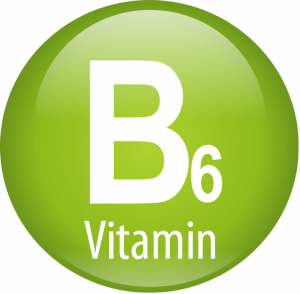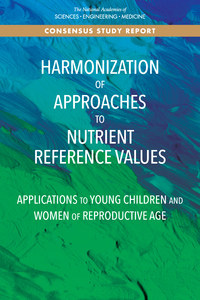- Have any questions? Contact us!
- info@dr-rath-foundation.org

Harmful Side Effects Of Opioid Painkillers Are Tripled In Dementia Patients
August 1, 2018
Taking Multiple Pharma Drugs Can Increase Likelihood Of Depression
August 8, 2018Gates Foundation Sponsors Plan Threatening Global Harmonization Of Nutrient Levels In Supplements

Image by Kuhlmann / MSC [CC BY 3.0 de (https://creativecommons.org/licenses/by/3.0/de/deed.en)], via Wikimedia Commons
It has long been the Pharma Cartel’s goal to ensure that the global availability of therapeutic micronutrient supplements is brought to an end. In recent years however, while recognizing that science-based natural therapies threaten the termination of the ‘business with disease’, its stakeholders have become increasingly aware that there is strong public opposition to regulatory bans on supplements. But as the recent report of a committee convened at the request of the multibillion dollar Bill & Melinda Gates Foundation makes clear, behind the scenes, under the guise of establishing so-called “safe upper intake levels”, initial preparations for the global harmonization of nutrient reference values (NRVs) are now underway. The worldwide setting of such values would potentially have major implications for the future availability of therapeutic micronutrient supplements.
The publication of the report follows a series of high-level meetings attended by representatives of the U.S. National Academy of Sciences, the World Health Organization (WHO), the Food and Agriculture Organization (FAO) of the United Nations, and other international stakeholders. Sponsorship for the meetings was provided by the WHO, the FAO, as well as also the Bill & Melinda Gates Foundation – an organization that has numerous investments in the pharmaceutical sector.
Significantly, the WHO and FAO are also sponsors of the Codex Alimentarius Commission, a United Nations body that has been seeking to limit nutrient doses in supplements for more than 20 years now. Since 1996, Dr. Rath and our Foundation have played a leading role in drawing global attention to Codex and the ongoing threat it poses to the availability of micronutrient-based therapies.
The report’s recommendations
While the report pays particular attention to how nutritional recommendations could be made for population subgroups such as young children and women of reproductive age, it leaves no doubt that its primary goal is to spur the setting of nutrient reference values (NRVs) to prevent the supposed “adverse effects of excessive intake.” Towards this end it specifically recommends that the setting of so-called “safe upper levels of intake” should be seen as a priority.
The actual setting of NRVs should, according to the report, be entrusted to a global body such as the WHO or FAO, or to a “regional consortium.” Notably, therefore, representatives from the Brussels EU and its anti-supplements ‘European Food Safety Authority’ also attended the high-level committee meetings and provided input to the report.
Tellingly, in recognition of the enormous public opposition that a global harmonization effort would face, the report infers that people will “need to be convinced that a harmonized approach to setting NRVs is advantageous and necessary.” Giving a clue to the worldwide propaganda campaign this would entail, it concludes that influential organizations, policy makers, non-profit organizations and researchers will be needed to “help launch an initiative that will explain the proposed harmonization approach and advocate for its implementation.”

Restrictions on vitamin B6 could lead to its maximum permitted level in supplements being set at less than 10 mg
How the setting of NRVs affects supplements
Over the past couple of decades there have been several attempts by governmental authorities to set so-called ‘safe upper levels of intake’ for micronutrients in supplements. Notable examples include reports published by the European Food Safety Authority of the Brussels EU; the German Federal Institute for Risk Assessment (which looked at vitamins and minerals); and the UK’s Expert Group on Vitamins and Minerals.
As I pointed out in a previous article on this subject back in 2007, the risk assessment approaches that seem likely to be used to calculate safe upper levels for micronutrients are seriously flawed. Worse still, after calculation, the quantities permitted in supplements will then be reduced even further by subtracting the average amounts – as determined from national dietary surveys – that people are supposedly getting in their diets from conventional foods, beverages, and drinking water. The Codex Guidelines for Vitamin and Mineral Food Supplements and the Brussels EU Food Supplements Directive already specify that this procedure should be utilized when setting maximum permitted micronutrient levels in supplements.
To illustrate how this works, if the upper safe level for vitamin B6 is calculated to be a mere 10 mg (as was recommended by the UK’s Expert Group on Vitamins and Minerals), and the average daily intake of vitamin B6 from food is calculated to be 2.9 mg (as was stated to be the case for men in the UK’s National Diet & Nutrition Survey in 2003), then the maximum permitted level of vitamin B6 in supplements could be set by global regulators at just 7.1 mg. For some micronutrients, if the upper safe level was deemed to be close to the average daily intake, such an approach could even result in them being banned from use in supplements altogether.
A desperate move
While the publication of this report should obviously not be ignored, ultimately it can only be seen as a desperate move. With new studies confirming the safety and effectiveness of natural therapies being published almost every week, awareness and use of nutritional and Cellular Medicine is now global and growing.
Studies show that micronutrient supplements are already being used by up to 69 percent of the population in the United States; over 54 percent of elderly women and almost 34 percent of elderly men in Germany; more than 71 percent of pregnant women in Saudi Arabia; and 43 percent of young people in Malaysia. Similar usage patterns can be found in many other countries around the world – and no amount of propaganda from governmental or global authorities is ever going to change this.
While it may have billions in the bank, the Bill & Melinda Gates Foundation will ultimately come to realize it is sponsoring a battle that it cannot possibly win.




